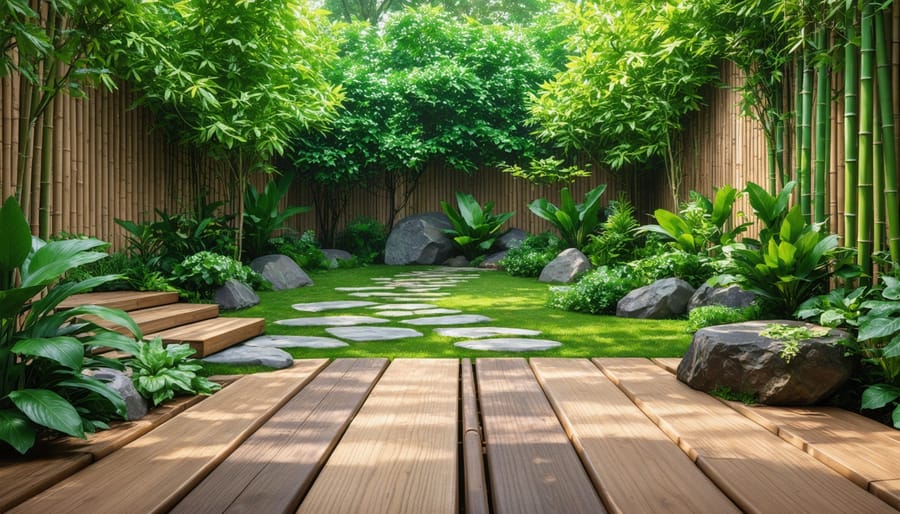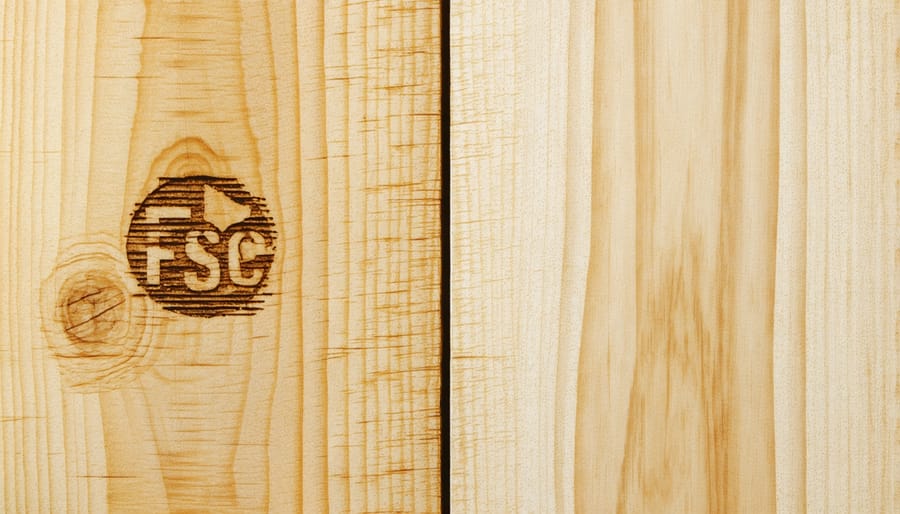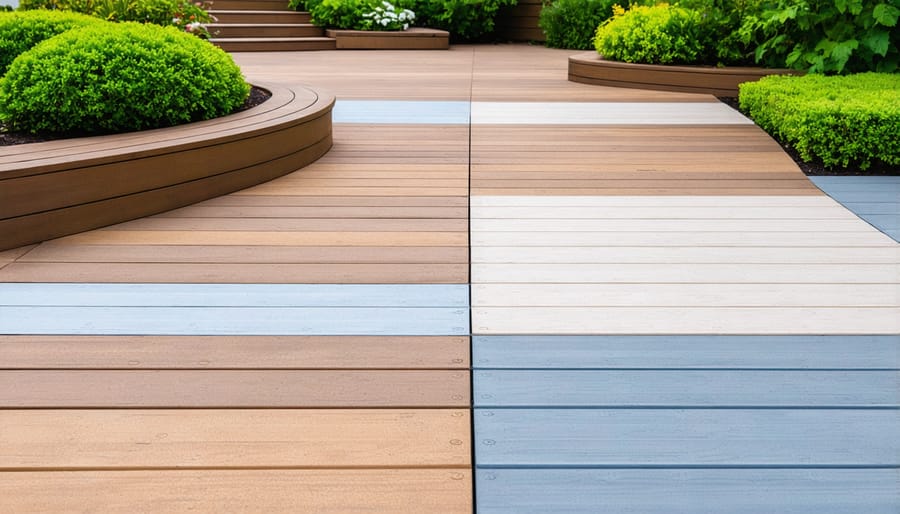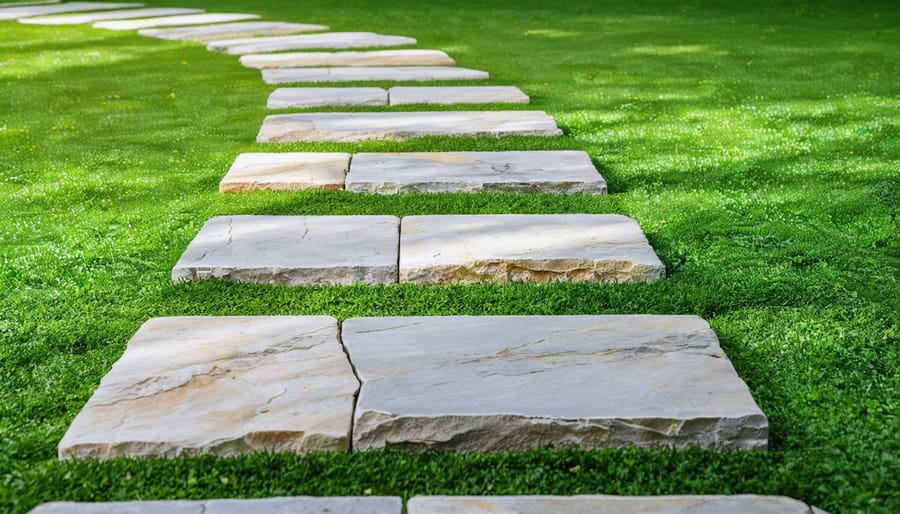Green Building Made Easy: Earth-Friendly Materials That Transform Your Outdoor Space

Transform your outdoor space into an eco-conscious sanctuary with sustainable materials that protect both your investment and our planet. As homeowners increasingly prioritize environmental responsibility, the choice of materials for outdoor projects has never been more critical. From bamboo decking that regenerates in just five years to recycled composite lumber that diverts thousands of pounds of plastic from landfills, today’s eco-friendly options combine durability with environmental stewardship. These innovative materials not only reduce your carbon footprint but also offer superior performance, requiring less maintenance and lasting decades longer than traditional alternatives. Whether you’re planning a new deck, garden beds, or outdoor furniture, choosing sustainable materials means investing in both your property’s future and the health of our environment. Discover how these earth-conscious building solutions can create beautiful, lasting outdoor spaces while preserving natural resources for generations to come.
Sustainable Wood Options for Outdoor Structures
Certified Sustainable Lumber
When choosing lumber for your outdoor projects, FSC-certified wood stands out as a truly sustainable choice. The Forest Stewardship Council (FSC) certification ensures that wood products come from responsibly managed forests that provide environmental, social, and economic benefits. This means the lumber you’re using has been harvested with careful consideration for forest conservation, wildlife protection, and local communities.
Look for the FSC label when purchasing lumber – it’s your guarantee that the wood meets strict environmental standards. These certified products are available in various species and grades, perfect for everything from deck building to shed construction. While FSC-certified lumber might cost slightly more than conventional options, the environmental benefits make it a worthwhile investment.
By choosing FSC-certified lumber, you’re supporting sustainable forestry practices that help maintain healthy forests for future generations. These forests continue to absorb carbon dioxide, provide wildlife habitats, and protect water resources. Many homeowners report feeling good about using certified lumber, knowing their outdoor projects contribute to forest conservation rather than deforestation.

Reclaimed and Upcycled Wood
Reclaimed wood offers a perfect blend of sustainability and character for your outdoor projects. By choosing salvaged materials, you’re not only reducing environmental impact but also adding unique charm and history to your space. These materials often come from old barns, warehouses, and retired shipping containers, giving them distinctive patterns and weathering that new lumber simply can’t match.
When used in sustainable outdoor furniture and storage solutions, reclaimed wood brings both durability and eco-conscious appeal. Many of these rescued materials are old-growth timber, naturally more resistant to decay and insects than newer wood. Plus, they’ve already proven their ability to withstand decades of use and weather exposure.
Popular applications include shed siding, deck boards, and decorative elements like window frames or door panels. The wood’s natural patina creates an instant aged look that many homeowners desire. Best of all, working with reclaimed materials often costs less than premium new lumber while helping reduce deforestation and landfill waste. Just ensure your source properly treats and certifies the wood for outdoor use to maintain its longevity.
Recycled and Composite Materials
Recycled Plastic Lumber
Recycled plastic lumber represents a groundbreaking advancement in sustainable building materials, offering homeowners an eco-conscious alternative to traditional wood. Made from post-consumer plastic waste, this innovative material combines durability with environmental responsibility, making it perfect for various outdoor projects, including eco-friendly patio designs and garden structures.
What sets recycled plastic lumber apart is its impressive resistance to moisture, insects, and decay – common issues that plague traditional wood products. It won’t splinter, crack, or rot, making it ideal for high-moisture areas like garden beds and ground-contact applications. The material requires virtually no maintenance beyond occasional cleaning, saving you both time and money in the long run.
Available in various colors and textures that mimic natural wood, recycled plastic lumber lets you achieve the aesthetic appeal of traditional lumber while contributing to environmental conservation. Each board typically contains thousands of recycled plastic containers, helping reduce landfill waste and ocean pollution.
While the initial cost might be higher than traditional lumber, the long-term benefits – including zero painting requirements, exceptional durability, and minimal maintenance needs – make it a smart investment for environmentally conscious homeowners.

Wood-Plastic Composites
Wood-plastic composites (WPCs) offer an innovative solution for eco-conscious homeowners seeking durable outdoor materials. These versatile products combine recycled wood fibers with recycled plastic, creating a material that captures the best of both worlds. The result is a sustainable option that looks like natural wood but requires significantly less maintenance.
One of the biggest advantages of WPCs is their exceptional durability. Unlike traditional wood, these composites resist rot, insect damage, and weathering, making them ideal for decking, fencing, and outdoor furniture. They don’t need regular staining or sealing, saving you time and money on maintenance while reducing the use of chemical treatments.
From an environmental perspective, WPCs help reduce waste by repurposing both wood and plastic materials that might otherwise end up in landfills. Many manufacturers use post-consumer plastics and wood waste from lumber mills in their production process.
While the initial cost might be higher than traditional wood, the long-term benefits often outweigh this investment. WPCs typically last longer, maintain their appearance better, and require minimal upkeep. They’re also available in various colors and textures, allowing you to achieve the perfect look for your outdoor space while making an environmentally responsible choice.
Remember to check the manufacturer’s specific blend and recycled content percentage when selecting WPCs for your project, as compositions can vary significantly between brands.
Natural and Alternative Materials
Natural Stone and Permeable Pavers
Natural stone and permeable pavers offer an eco-friendly foundation for your outdoor spaces while adding timeless beauty to your property. These materials allow rainwater to seep naturally into the ground, reducing runoff and helping to replenish groundwater supplies.
Natural stone options like limestone, granite, and slate come directly from the earth and require minimal processing. Their durability means they’ll last for decades, reducing the need for replacement and waste. Each stone presents unique patterns and colors, creating distinctive pathways and patios that blend seamlessly with your landscape.
Permeable pavers feature small gaps between each unit, filled with crushed stone or special joint material. This design creates a stable surface while allowing water to filter through, making them perfect for driveways, walkways, and patios. They’re particularly effective in areas prone to flooding or where water management is a concern.
Both options require minimal maintenance – occasional sweeping and periodic joint material replacement for permeable pavers, or simple cleaning for natural stone. Best of all, these materials can be reused or recycled at the end of their life cycle, making them truly sustainable choices for your outdoor projects.

Cork and Hemp-Based Products
Cork and hemp-based products are revolutionizing outdoor construction with their remarkable sustainability and durability. Cork, harvested from the bark of cork oak trees without harming them, offers natural water resistance and excellent insulation properties. It’s increasingly popular for outdoor furniture, decking, and decorative panels, providing a unique, warm aesthetic that ages beautifully.
Hemp-based materials are equally impressive, combining strength with environmental benefits. When mixed with lime to create hempcrete, it creates sturdy, breathable structures that naturally regulate moisture. This versatile material works wonderfully for garden walls, pathways, and outdoor storage units. Both cork and hemp require minimal processing, making them truly eco-friendly choices.
These materials are also naturally resistant to mold and pests, reducing the need for chemical treatments. Their long lifespans and biodegradable nature mean less environmental impact over time. For homeowners looking to reduce their carbon footprint, cork and hemp products offer practical, attractive solutions that stand up to outdoor conditions while maintaining their natural beauty.
Maintenance and Longevity
Maintaining eco-friendly materials properly not only extends their lifespan but also maximizes their environmental benefits. Start by regularly inspecting your sustainable materials for signs of wear, moisture damage, or pest activity. For wooden elements, apply earth-safe outdoor finishes every few years to protect against weathering while maintaining their natural beauty.
Clean your eco-friendly materials using gentle, biodegradable cleaners rather than harsh chemicals. A simple mixture of vinegar and water often works perfectly for most surfaces. For bamboo and cork materials, avoid excessive moisture exposure and clean spills promptly to prevent warping or deterioration.
Many sustainable materials actually improve with age when properly maintained. Reclaimed wood develops a beautiful patina, while cork becomes more resilient with use. Regular maintenance schedules should include seasonal inspections, particularly before and after extreme weather conditions.
To enhance longevity, consider these practical tips:
– Install proper drainage systems around outdoor sustainable materials
– Use protective covers during severe weather
– Keep materials well-ventilated to prevent moisture buildup
– Address repairs promptly to prevent further damage
– Apply appropriate sealants and protective coatings as recommended
With proper care, eco-friendly materials can last just as long as, if not longer than, conventional alternatives. Many sustainable materials are naturally resistant to decay and pests, making them excellent long-term investments for your home and the environment. Remember that prevention is always better than cure – regular maintenance will save both time and resources in the long run.
Choosing eco-friendly materials for your outdoor projects is more than just a trend – it’s a meaningful step toward a sustainable future. These environmentally conscious options not only reduce your carbon footprint but often prove more durable and cost-effective in the long run. By selecting materials like reclaimed wood, recycled plastic lumber, or sustainable bamboo, you’re investing in both your property and our planet’s wellbeing.
The benefits extend beyond environmental impact. Many eco-friendly materials require less maintenance, resist weather damage better, and can increase your property’s value. They’re also becoming increasingly affordable and widely available, making sustainable choices more accessible than ever.
As you plan your next outdoor project, consider the lasting impact of your material choices. Whether you’re building a new shed, creating garden features, or updating your outdoor space, eco-friendly materials offer the perfect balance of functionality, aesthetics, and environmental responsibility. By making conscious decisions today, you’re contributing to a greener tomorrow while enjoying beautiful, durable outdoor solutions that stand the test of time.

